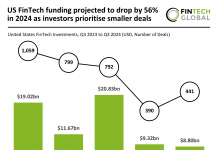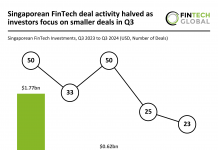Traditionally, wealth management has been for the wealthy. The average Joes and Janes have often been skipped out on by big wealth managers due to little revenue incentive to capture that market.
However, times are changing and FinTech companies are democratising wealth management, making it easier for retail investors to get involved. Apps like Robinhood have opened up investing to many people. A report from CNBC stated the retail investing app had around 18 million users and over $80bn in customer assets, as of July 2021. Robinhood has been a major player in the market for many years and reached an impressive $32bn valuation on its IPO. It is also just one of many similar platforms helping to open up wealth management.
While the retail investors might not generate as much revenue as the most affluent customers, it is quickly becoming an attractive market for wealth management firms. If traditional players dont want to be side-lined by WealthTech companies, they will need to support the democratisation of the sector.
Fredrik Dav?us, CEO of financial analytics API developer Kidbrooke, explained that the evolution of digital distribution channels, open banking and analytical capabilities have significantly reduced the costs of high-quality wealth management services. This is allowing firms to cater to previously underserved segments without needing to waste masses of resources. ?Dav?us said, ?As the adoption rates increase throughout the industry, this market share is quickly divided between the players who have enough flexibility to innovate and, oftentimes, a large retail customer base. Therefore, at this point digitalisation and democratisation of wealth management have become one of the core strategies to remain relevant in the new era.p>
Where to start?
With the need to stay relevant, wealth managers will need to do their part in democratising wealth management. The trouble is figuring out where to begin. Dav?us believes the starting point is to analyse existing business models and prioritise capabilities that would benefit customers. For example, self-service and full-robo solutions might need a more performant and scalable setup compared to advisory tools used in physical meetings, he explained.
After this, the firm needs to consider their end goal. Is the desire to create a holistic service or a more bite-sized, siloed approach. Is the urge to consider in-house views or more general holistic characteristics and consensus views. Then the firm needs to decide how granular and realistic the underlying asset modelling needs to be. He added, ?It is also important to objectively assess your technology stack. Do you have a platform or application into which a new analytics API can be integrated, or must you also find and implement such a platform?p>
The final consideration is how compliance can be maintained. The more sophisticated the analytics, the higher the demand for transparency, auditability and validity of the underlying algorithms will be.
There is a lot to consider, and the transition will take place over many years. Dav?us said, ?While starting small is a good idea in most cases, the strategy you decide to pursue should come with a long-term vision. Depending on the size of the enterprise, its business model and infrastructure, firms need to come up with a roadmap outlining their development in the following years. Then you need to ensure that the technology you use for your first steps should be able to withstand the scrutiny of real-life conditions and be flexible enough to be continuously reviewed and updated with additional features.p>
He added that a way to capitalise on this strategy is to rely on case agnostic components of the future digital experiences, such as financial analytics, and integrate them across customer journeys. Additionally, API-only approaches can improve an ability to achieve holistic approaches to end-customer relationships.
There are multiple benefits to use case agnostic technology, Dav?us explained. A major one is its ability to make consistent financial calculations across customer journeys. Another is to reduce time-to-market with simplified decision-making among stakeholders. ?In our experience, navigating internal communications becomes a lot faster when the feature components are already put in place for initial use case(s). Third, when you have built up several journeys or use cases, you can then easily tie them together into a more complete whole. This is what will continue to add value to your customers, and this is what will keep your customers engaged over time.p>
Overcoming hurdles
One of the biggest hurdles wealth managers will want to avoid when building a new customer journey is creating an isolated function based on a single use case. Dav?us described these as ?customer journey islands.p>
These islands would limit the value as it would be unable to understand the context of the previous relationship between a customer and organisation. As a result, a customer could have been using an institution services for multiple years, but disconnected systems would make it seem like they have never worked together and have no history.
Secondly, if a firm strategy relies on adding more use cases to existing isolated journeys, there could be integration problems, he said. These ?islandsare designed independently and might struggle to be brought together. To avoid the problems altogether, firms need a holistic approach.
Aside from islands, another major issue with democratising wealth management is the education gap. A recent survey by Wealthify claimed 72% of UK savers felt they were not confident enough to start investing. While a study from MagnifyMoney found that 77% of Americans regretted not starting to invest earlier in life.
An easy way to resolve the problem is simply adding interactive customer journeys. Dav?us offered an example of utilising Kidbrooke advanced analytics so wealth managers can identify potential issues in the financial situations of thousands of customers within a matter of seconds and then send them personalised, proactive notifications on how to resolve an issue.
These alerts could even have visualisations explaining where they are, what needs improving and the impact improvements could have in the future. ?The education process is most efficient when it comes with practice, and with the right technology the financial institutions have an opportunity to empower the retail customers to learn by doing.p>
How OutRank is easing the challenge
Kidbrooke OutRank solution was designed to help wealth managers become much more flexible. It is a financial simulation engine and is offered as a flexible cloud-based API. Its financial analytics supports forecasts for investments, pension, mortgage and holistic financial planning applications. Other features include economic and risk-profiling analytics, continuous monitoring of goal alignment and more.
Dav?us added, ?Historically, financial analytics capabilities used to be provided manually through employing teams of experienced financial analysts. Today, OutRank makes it possible to provide them at scale through either self-service or hybrid channels, dramatically cutting costs on providing these services. According to our estimations, running a physical channel powered by OutRank would result in about 40% cost savings on preparing for meetings and monitoring the customers financial situation. In the case of fully automated channels, wealth managers can run up to 80% leaner businesses. Running a digitalized, much more efficient business model delivering a high-quality, personalised service enables wealth businesses to cater to previously underserved customer segments.p>
While there are many companies out there that offer financial analytics, Kidbrooke is very different. Dav?us stated competitors are based on different technology that do not assess the quality, scalability, time-to-market and potential infrastructural readiness until much further down the line. OutRank also boasts to be up to ten-times faster than the average competitor.
The OutRank solution is also capable of supporting balance sheet level coverage of a customer financial situation, giving an institution the power to create nearly any digital use case needed for cash flow modelling. It also lets the firm take an incremental approach to innovation, removing siloed journeys one after another, but then later combining them into a consistent experience.
Dav?us concluded, ?Third, our underlying model has been created by an experienced team of quantitative finance professionals incorporating decades of expertise from the most renowned financial institutions. This element is critical when it comes to incorporating the institutions house views into the decision-making of the software as well as achieving the required level of granularity in modelling the financial institutions product universe.p>
Copyright ? 2022 FinTech Global


![Kidbrooke238 (1)[60]](https://fintech.global/wp-content/uploads/2022/02/Kidbrooke238-160-696x464.jpg)








